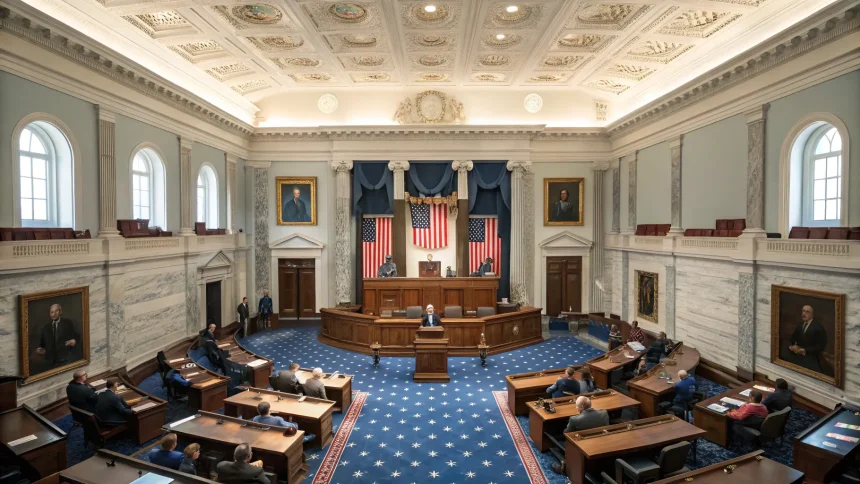The Senate voted Monday to confirm Stephen Miran as the newest member of the Federal Reserve Board. Miran, who has worked in both Trump administrations, will join the nation’s central banking system amid questions about the Fed’s independence.
Miran’s confirmation adds a new voice to the seven-member board that plays a crucial role in setting U.S. monetary policy, including decisions on interest rates that affect everything from mortgage costs to credit card rates.
Independence Concerns Emerge
Unlike previous Fed appointees who typically resign from other positions, Miran has indicated he will not step down from his current role in the White House. Instead, he plans to take a leave of absence while serving on the Fed Board.
This unusual arrangement has prompted questions about potential conflicts of interest and the traditional separation between the Federal Reserve and the executive branch.
“The Federal Reserve’s independence from political pressure is fundamental to its ability to make monetary policy decisions based on economic data rather than political considerations,” said a banking policy expert familiar with the confirmation process.
Dual-Role Precedent
Miran’s decision to maintain ties to the White House while serving on the Fed Board breaks with historical norms. For decades, Fed governors have typically severed formal connections with previous employers to avoid any appearance of divided loyalties.
The Federal Reserve Act established the central bank as an independent entity specifically to shield monetary policy decisions from short-term political pressures. This independence allows the Fed to focus on its dual mandate of price stability and maximum employment, even when those goals might require unpopular decisions.
Critics worry that Miran’s arrangement could undermine this separation. “When a Fed governor maintains active ties to an administration, it creates at minimum the perception that political considerations might influence their votes on interest rates and financial regulations,” noted a former Fed official.
Miran’s Background and Qualifications
Miran brings significant economic experience to the position, having served in economic advisory roles across both Trump administrations. His supporters point to his understanding of financial markets and macroeconomic policy as valuable assets for the Fed Board.
During his confirmation hearings, Miran faced questions about how he would balance his dual roles. He defended his plan, stating that a leave of absence would provide sufficient separation while allowing him to return to his White House position after his Fed service.
The Federal Reserve Board consists of seven governors appointed by the President and confirmed by the Senate for 14-year terms. This long tenure is designed to insulate members from political pressure and allow them to make decisions based on long-term economic health rather than election cycles.
Miran joins the Fed at a time when the central bank faces complex challenges, including managing inflation pressures while supporting economic growth. His votes on monetary policy will be closely watched for any signs of political influence.
As Miran prepares to take his seat on the Board, market watchers and economists will be monitoring whether his unusual arrangement affects the Fed’s decision-making process or public perception of its independence in the months ahead.








